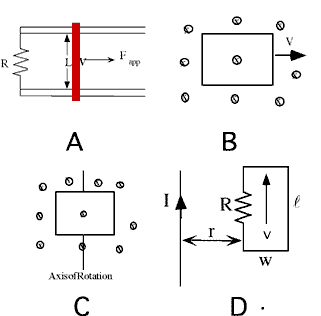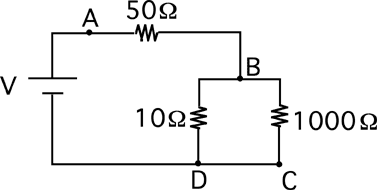Goal: Reason with Faraday’s law
Source: 283-720 Faraday’s Law
For which of the following is there an induced emf?

- A conducting rod is pulled on conducting
rails that are placed in a uniform magnetic field directed into the
page.- A conducting loop moves through a uniform magnetic field
directed into the page.- A conducting loop rotates in a uniform
magnetic field directed into the page.- A conducting loop moves
in a magnetic field produced by an infinite current-carrying wire.
- A only
- A and B only
- A and C only
- A and D only
- B and C only
- A, B, and C
- A, C, and D
- All of them
- None of the above




Commentary:
Answer
(3) Viewing the various cases using the Lorentz force law helps students
understand why current flows in those loops experiencing a change of
magnetic flux.